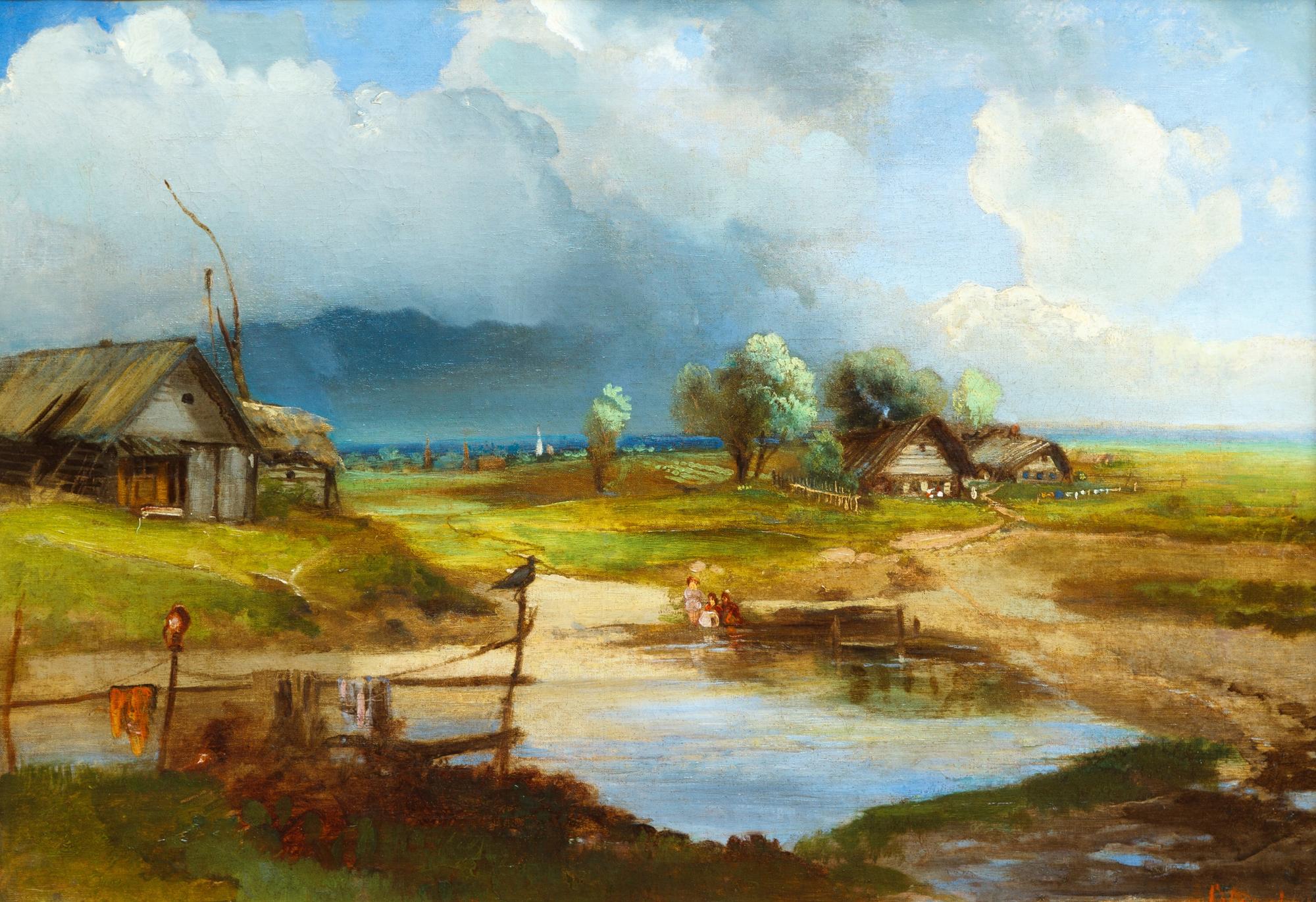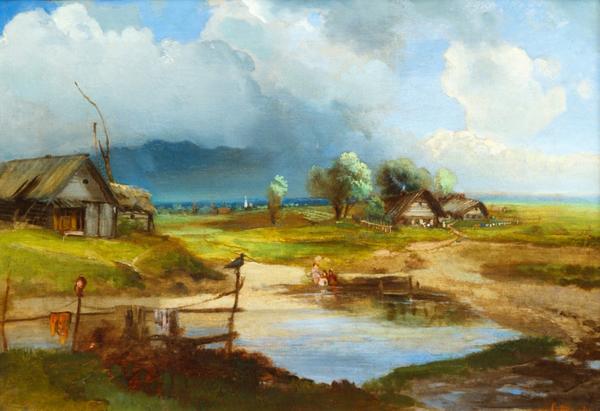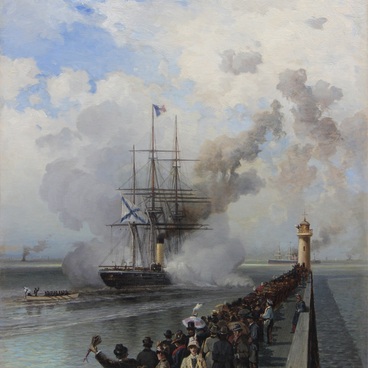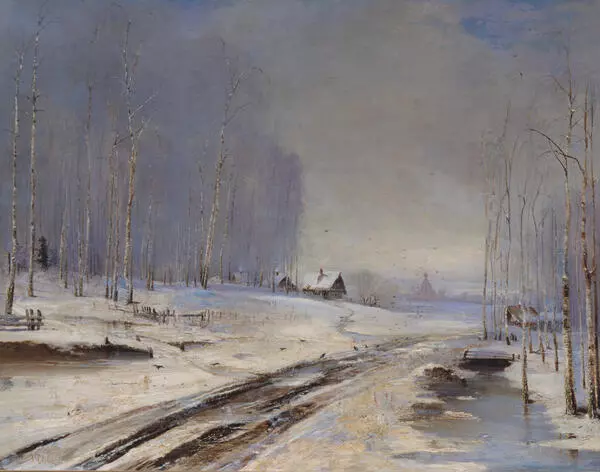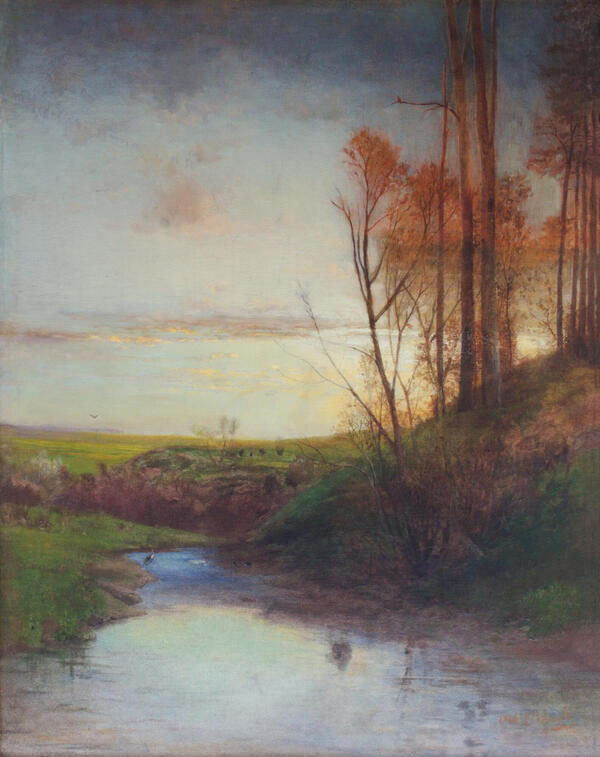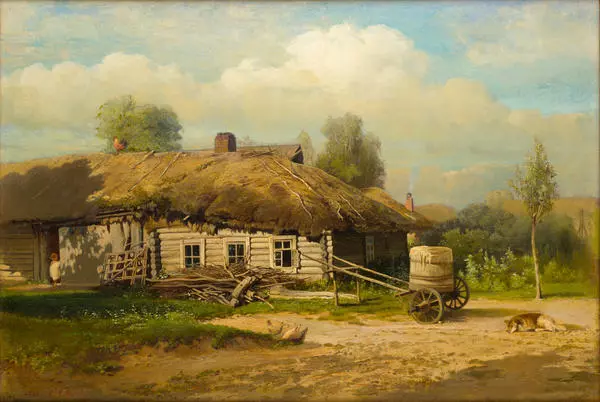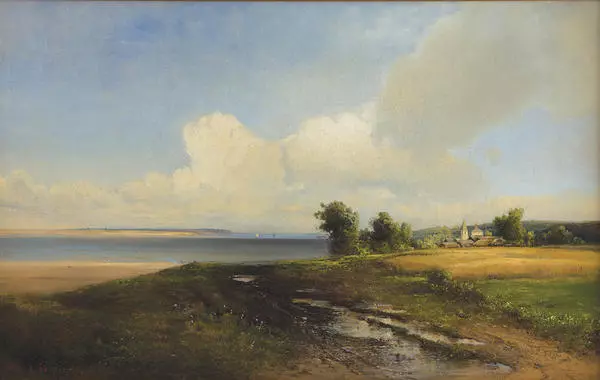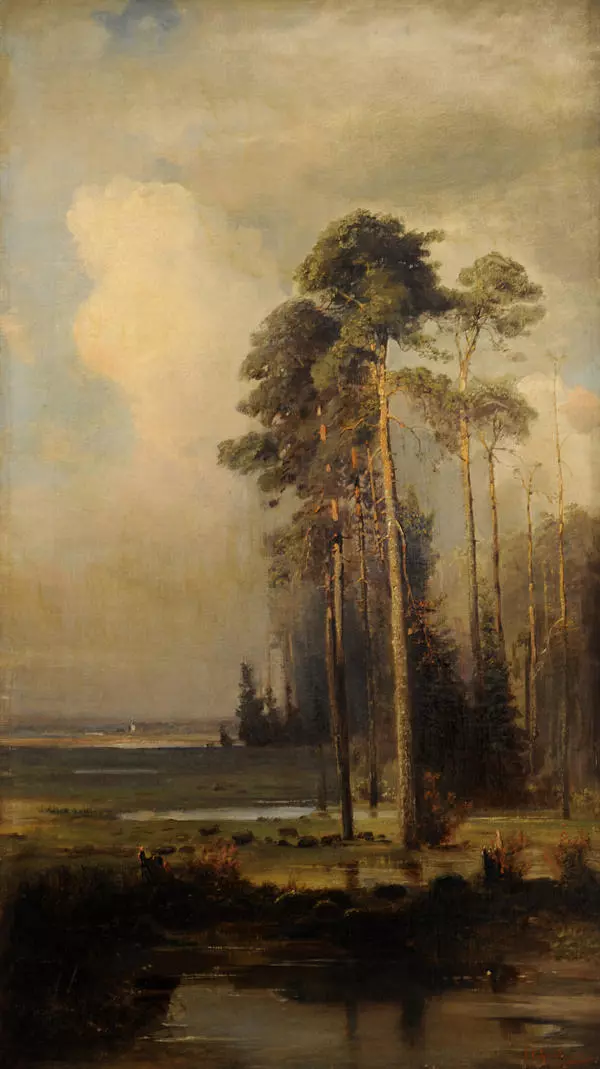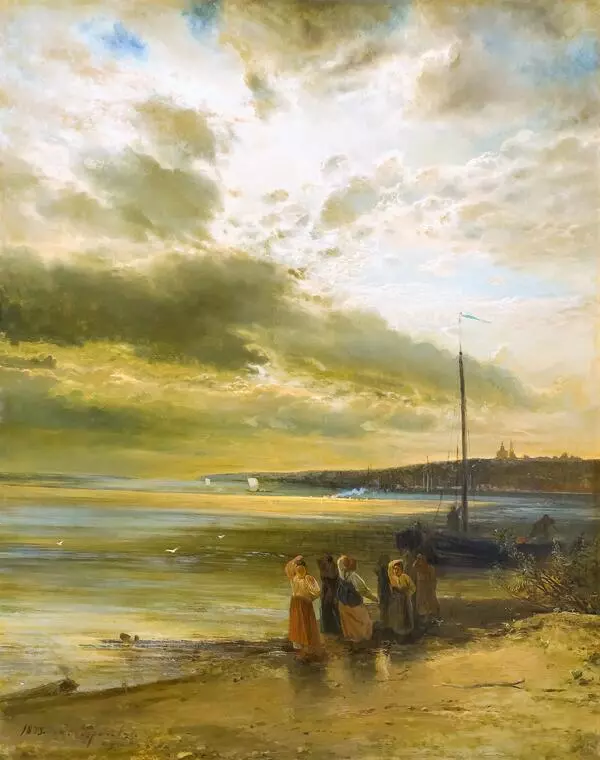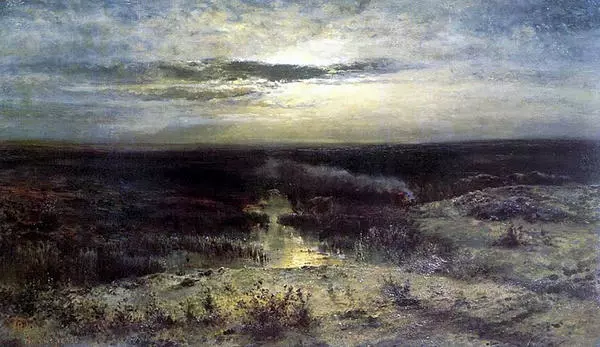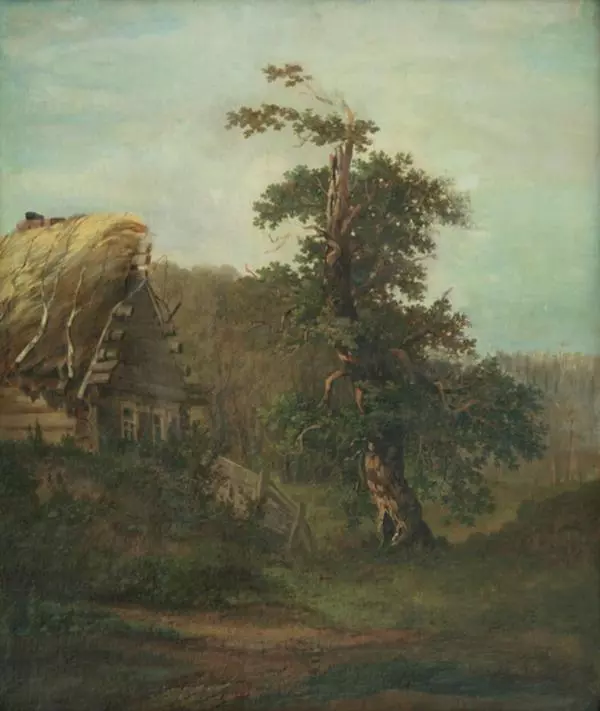The Khanty-Mansiysk Museum of Fine Arts holds Rural Landscape, a landscape painted by Russian artist Alexei Savrasov in the 1880s. At the time, the painter was having his ups and downs in his art career, but in his canvases, he was invariably reverential to Russian nature and revealed its vivid and vibrant lyricism.
The year 1871 was a turning point in Savrasov’s fate. He contributed to the first art show of the Society for Traveling Art Exhibitions, or the Itinerants, with his painting The Rooks Are Back. Art historians think that this picture opened a new direction in Russian painting — lyric landscape.
Savrasov’s works of the 1870s and the 1880s, including the Rural Landscape, are hinged on delicate hues and barely perceptible color gradations. In his paintings, the artist captured byroads, little courtyards, Moscow and Volga nature. In the Rural Landscape, we see the same simple motif and anticipation of a forthcoming change as in the Rooks. However, this time, it is not an eager expectation of spring but a farewell to summer.
The Rural Landscape depicts a summer day painted in a realistic manner. The landscape itself is expressive, with solid, tangible and strong brushwork so peculiar to Savrasov. Integrity of composition is another distinguishing feature of this landscape, with elements of countryside buildings harmoniously fitted into a wide expanse. In the foreground, we see a small pond in the center that occupies a large part of the picture. The light blue clear and smooth water surface is the compositional focus of the canvas.
The painting is full of various minutiae. To the left, Savrasov painted a pond bank with a railing fragment on which we can see an earthenware jug, some laundry drying up and a bird perched. On the other bank to the right, there is a wooden platform with three human figures by the water. Over the pond, to the right and left, there are squat peasants’ huts with sheds and rare trees. The chiaroscuro and lavish color range render the ambience of waning summer very accurately. In the background, amidst a light blue sky with gray and pink clouds, we see a white bell-tower, which was created by Savrasov with one white pigment dash.
In the 1880s, Savrasov’s contributions to exhibitions became fewer and farther between. He started to have heath issues and his eyesight was deteriorating. In 1882, the painter was fired from the Moscow School of Painting. In that period, his works, still full of the beauty of nature, began to feature dark and disturbing motifs.
The year 1871 was a turning point in Savrasov’s fate. He contributed to the first art show of the Society for Traveling Art Exhibitions, or the Itinerants, with his painting The Rooks Are Back. Art historians think that this picture opened a new direction in Russian painting — lyric landscape.
Savrasov’s works of the 1870s and the 1880s, including the Rural Landscape, are hinged on delicate hues and barely perceptible color gradations. In his paintings, the artist captured byroads, little courtyards, Moscow and Volga nature. In the Rural Landscape, we see the same simple motif and anticipation of a forthcoming change as in the Rooks. However, this time, it is not an eager expectation of spring but a farewell to summer.
The Rural Landscape depicts a summer day painted in a realistic manner. The landscape itself is expressive, with solid, tangible and strong brushwork so peculiar to Savrasov. Integrity of composition is another distinguishing feature of this landscape, with elements of countryside buildings harmoniously fitted into a wide expanse. In the foreground, we see a small pond in the center that occupies a large part of the picture. The light blue clear and smooth water surface is the compositional focus of the canvas.
The painting is full of various minutiae. To the left, Savrasov painted a pond bank with a railing fragment on which we can see an earthenware jug, some laundry drying up and a bird perched. On the other bank to the right, there is a wooden platform with three human figures by the water. Over the pond, to the right and left, there are squat peasants’ huts with sheds and rare trees. The chiaroscuro and lavish color range render the ambience of waning summer very accurately. In the background, amidst a light blue sky with gray and pink clouds, we see a white bell-tower, which was created by Savrasov with one white pigment dash.
In the 1880s, Savrasov’s contributions to exhibitions became fewer and farther between. He started to have heath issues and his eyesight was deteriorating. In 1882, the painter was fired from the Moscow School of Painting. In that period, his works, still full of the beauty of nature, began to feature dark and disturbing motifs.
